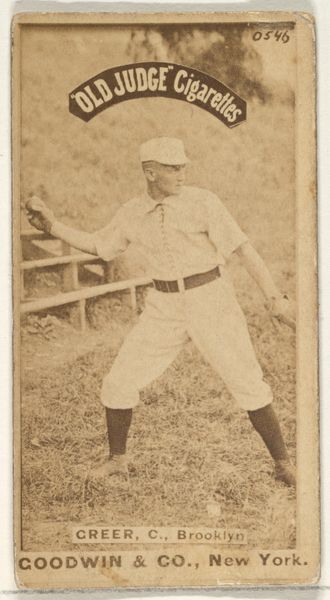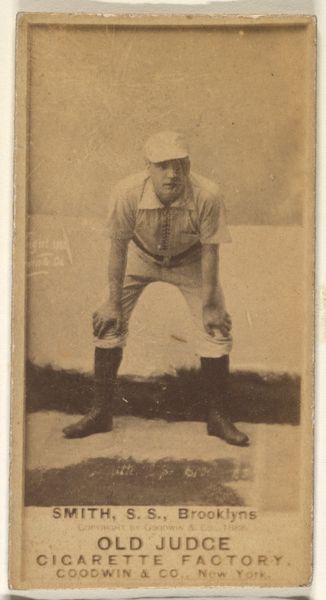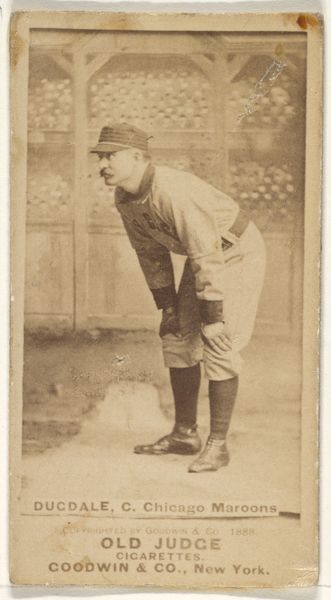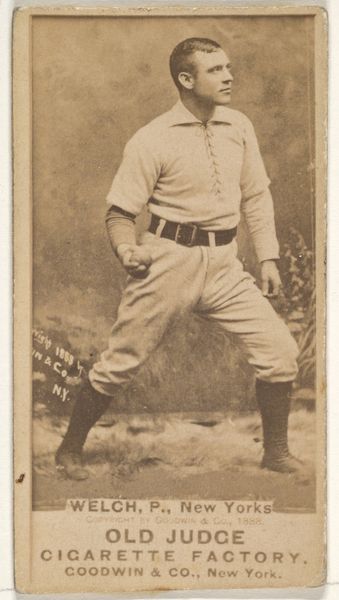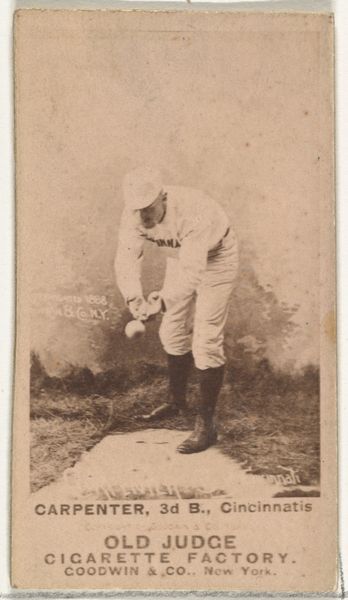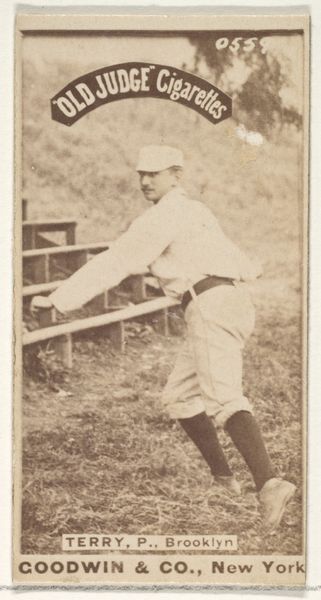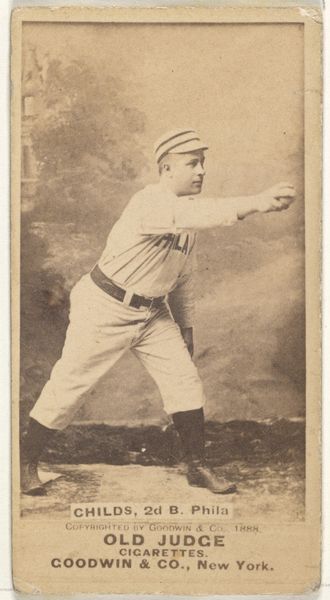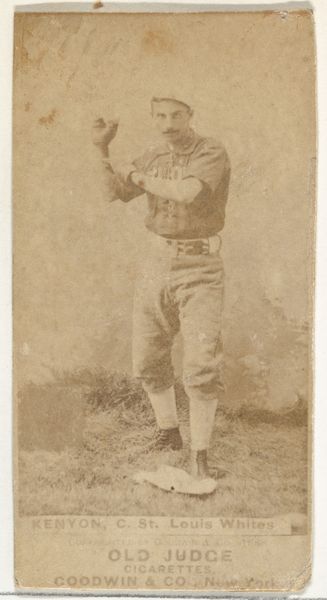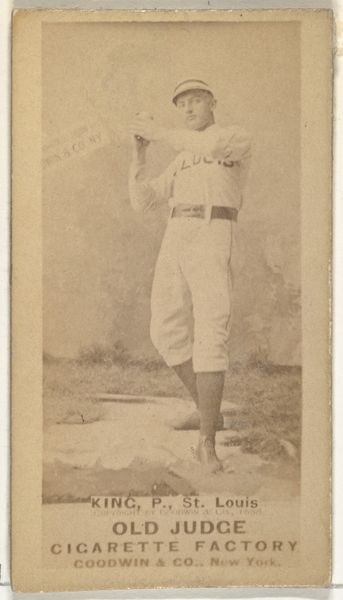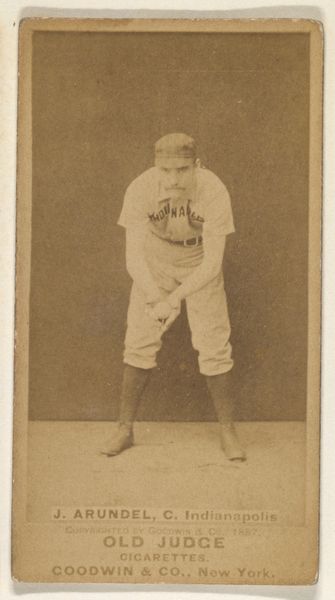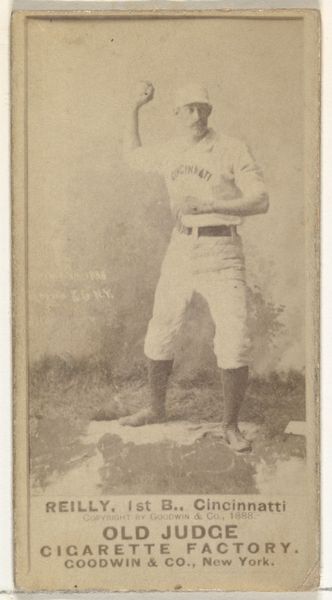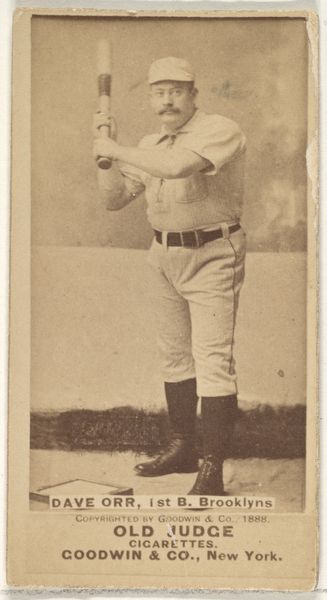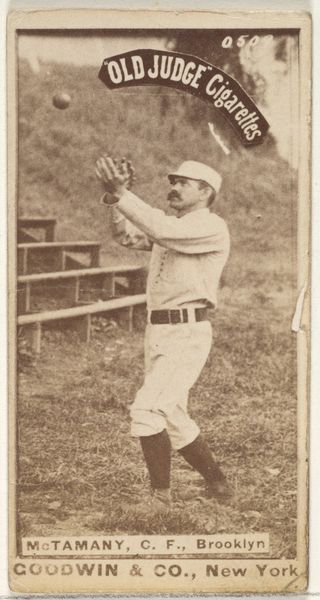
Pinkney, 3rd Base, Brooklyn, from the Old Judge series (N172) for Old Judge Cigarettes 1887 - 1890
0:00
0:00
drawing, print, photography
#
portrait
#
drawing
# print
#
baseball
#
figuration
#
photography
#
athlete
Dimensions: sheet: 2 11/16 x 1 3/8 in. (6.9 x 3.5 cm)
Copyright: Public Domain
Curator: I am struck by the tonal range, so subtle, across this monochromatic photograph, titled "Pinkney, 3rd Base, Brooklyn," from the Old Judge series, created by Goodwin & Company between 1887 and 1890. What's your initial take? Editor: I find the posture particularly compelling. The way he is crouched, poised, gives an anticipation of the next moment. You can almost feel the tension in his legs and how he’s set and ready. The artist uses angles very skillfully in the fore- and background to set this dynamic tension and focus. Curator: Precisely. It's part of a larger series commissioned for Old Judge Cigarettes, embedding the photograph within a particular economy. Consider the commercial function. The images were not just art; they were incentives, collectibles distributed with tobacco products. The subject matter—Pinkney, a baseball player for Brooklyn—also reflects the rising popularity of baseball as a spectacle and the commodification of athletes. This conflation of leisure, labor, and consumption, seems so pertinent to modern sport. Editor: Yes, but let's also focus on the construction of the image itself. Look at the foreground – those diagonal shadows, framing Pinkney in a V-shape which drives our attention right to the subject, enhancing his sense of stability despite being in a crouch. How is that mood achieved photographically? The subtle play of light and shadow? The clarity of the printing, and the careful choice of the paper’s color tone adds texture to the composition too, which is striking and evocative. Curator: That texture surely comes, in part, from the production methods too. As a photograph transformed into a widely distributed print, the surface undoubtedly loses a lot in its translation, flattening what could have been depth and detail. Furthermore, how might the ubiquity of these cards, their dispersal through commercial channels, contribute to the construction of fame and celebrity? Think of the mass production implications for this figure and his social standing. Editor: It highlights that intriguing blend of naturalistic representation with formal arrangement, don't you think? Curator: Definitely, and how mass production is both art-making tool and the distribution means. I have a deeper appreciation for what you highlighted. It adds another dimension. Editor: And the process has revealed so much richness in what seemed at first glance, simply a photograph on card.
Comments
No comments
Be the first to comment and join the conversation on the ultimate creative platform.
